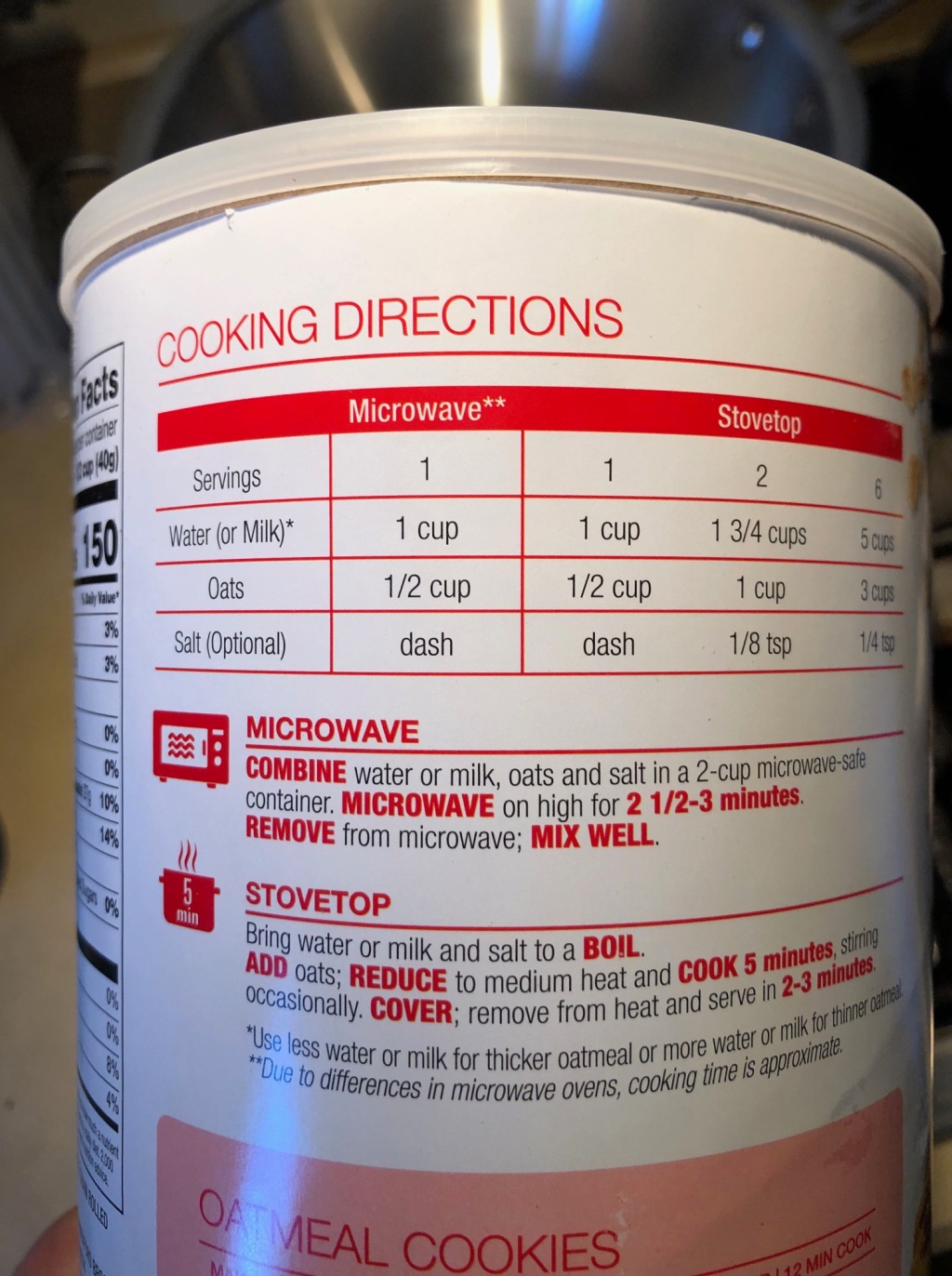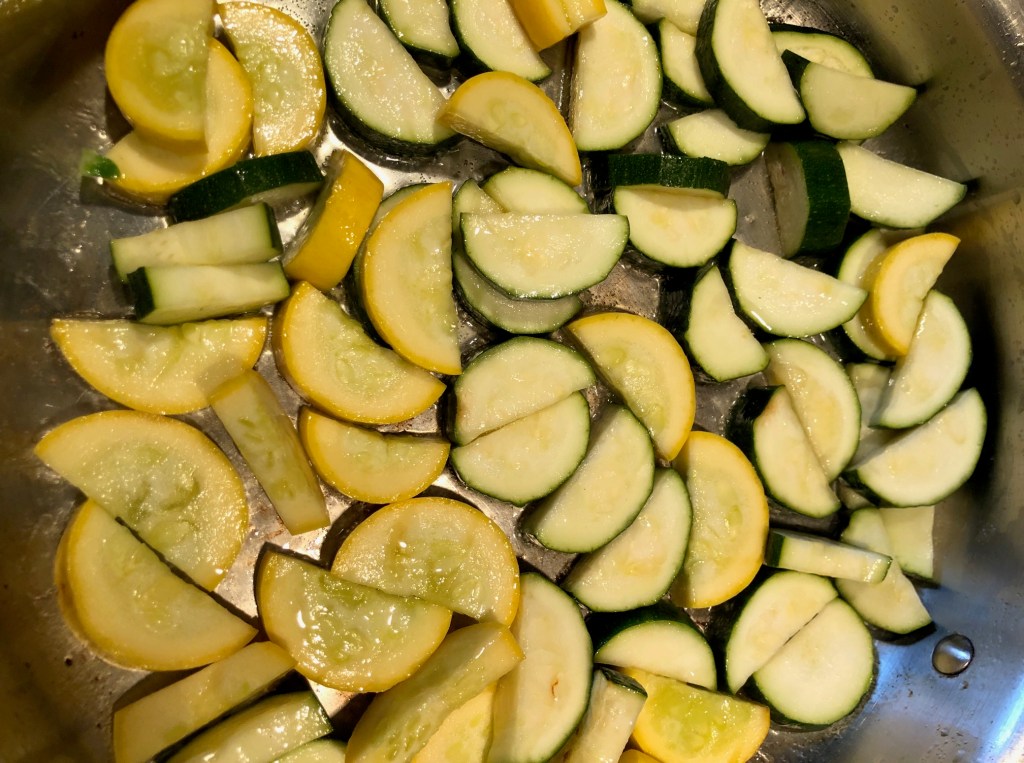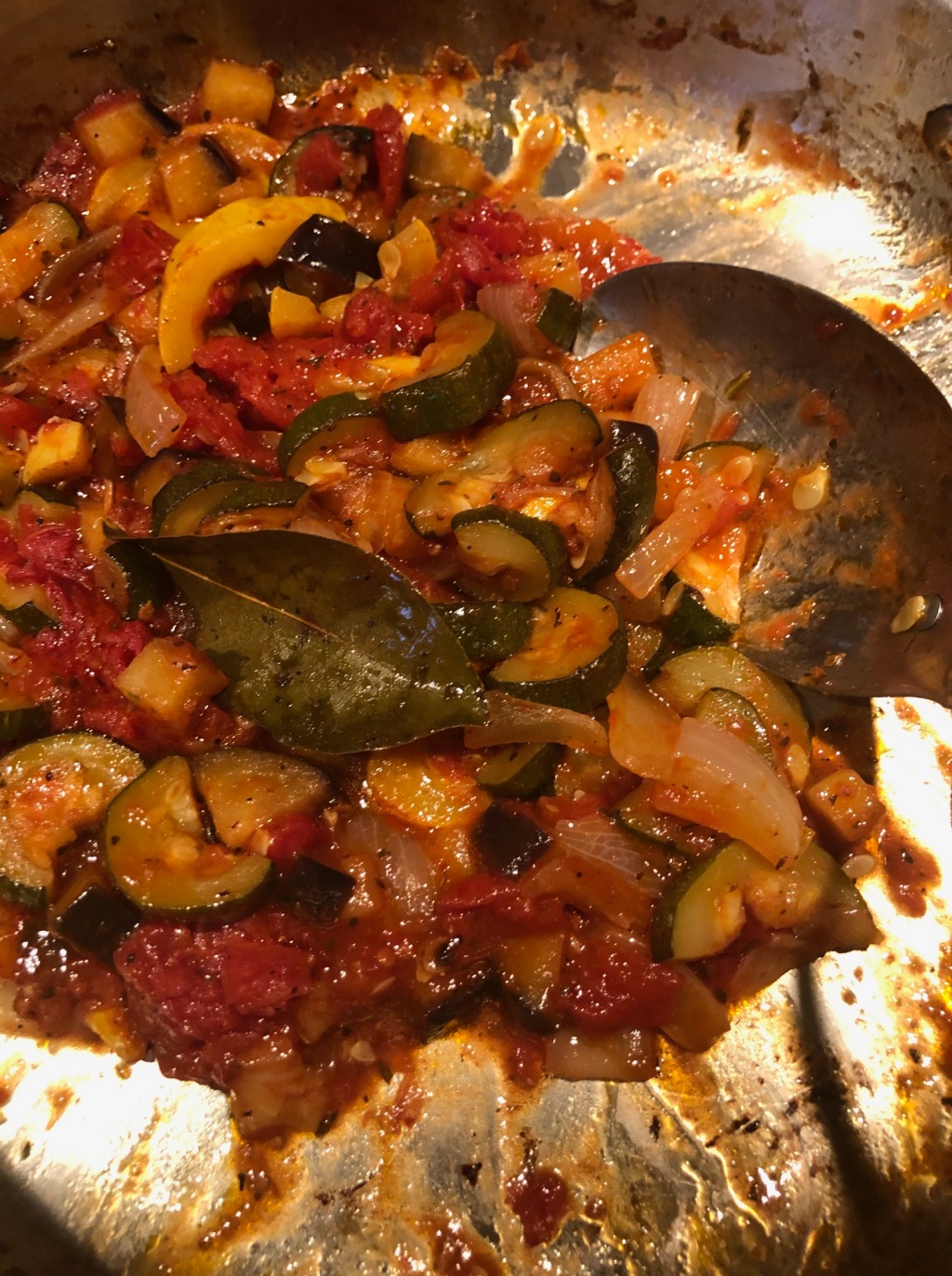You learn something new every day.
Growing up, there were two prominent cookbooks in area homes.
The Fannie Farmer Boston Cooking- School Cookbook originally published in 1896, likely held by your grandmother, and the red and white cover General Mills Betty Crocker Cookbook published in 1950, that your mother received as a wedding gift.
Recipes contained within, seldom included step-by-step instructions for each ingredient. If there were step-by-step instructions, they were in the first chapter, not in each recipe.
Moreover, it was presumed that you obtained basic cooking skills (see footnote) either by osmosis in your family kitchen, or through instruction similar to the Boston Cooking- School < wikipedia link.
Recently this was driven home by a young woman on @threads social media discussing the confusing instructions on oatmeal containers.
Oh come on…. Seriously?
Seriously.
“I’m neurodivergent and this sounds like a 2-step process. Is it? I know that I can defrost chicken in the microwave, and then cook it on the stove or in the oven. Is this the same idea?”
No. Way. This has to be a joke.
At work, a young chef said: “That sounds like half of my family. It’s for real.”
So let’s look at the label in the associated photo.
The instructions are missing six words – shown in Italics:
Select One of the following:
Microwave Directions
OR
Stovetop Directions
Otherwise, it is indeed unclear. You can make a legitimate case for the following:
So I microwave this with the amount of water shown,
then I put the hot oatmeal in the pot with the amount of water shown,
and cook it again as instructed?
The presumption is that you would know not to do both.
Don’t presume.
footnote:
those of us in the culinary trades are used to seeing recipes in the Escoffier tradition, a chronological list of ingredients with absolutely no discussion or instruction.
The presumption a century ago was that you apprenticed and learned the processes under close supervision, therefore méthode was unnecessary, as your chef may have a technique that differs from Escoffier’s tome.
This presumption is impacting commercial kitchens over a century later, as both the apprentice “brigade system” and culinary school have fallen from favor.
~ G






Leave a comment